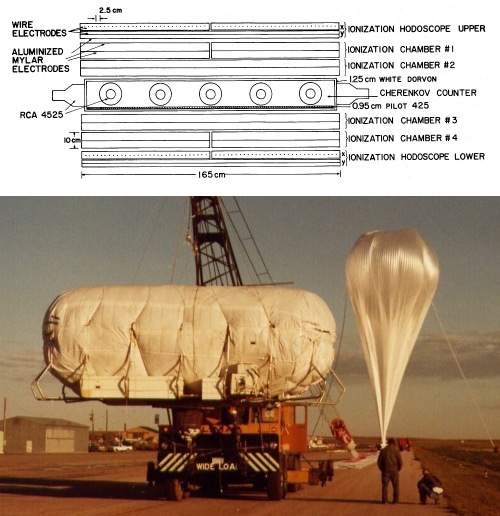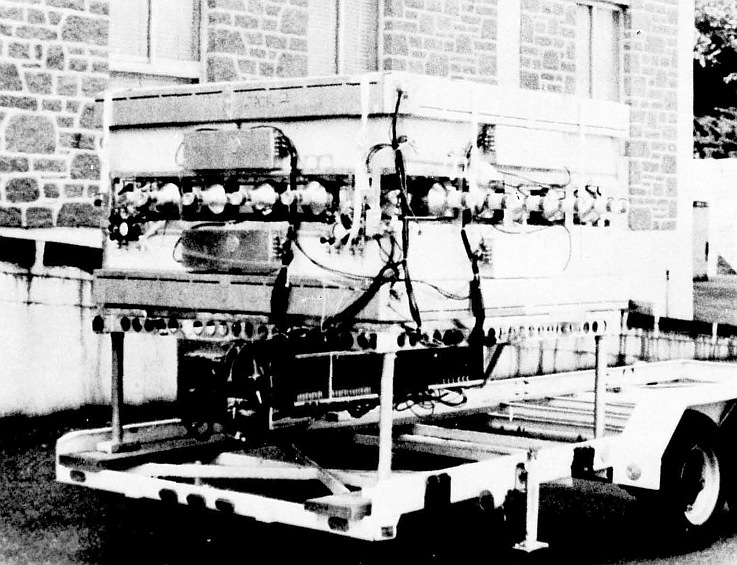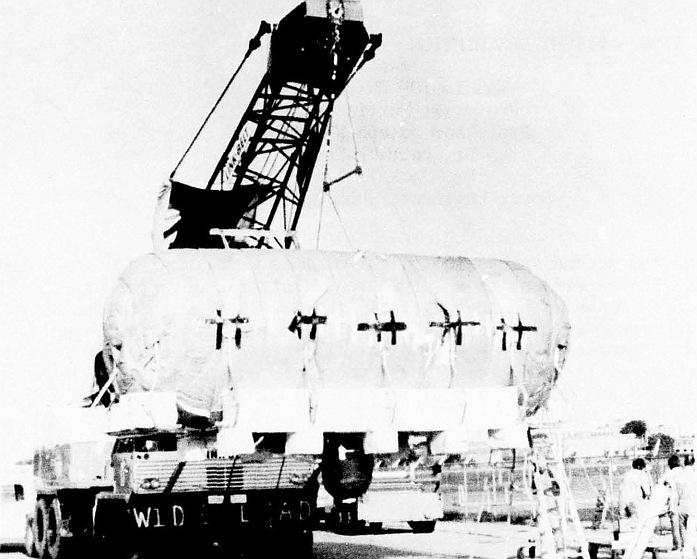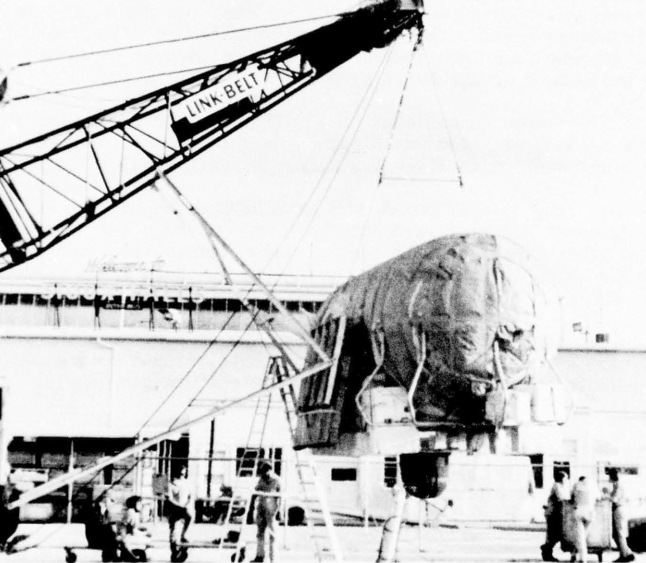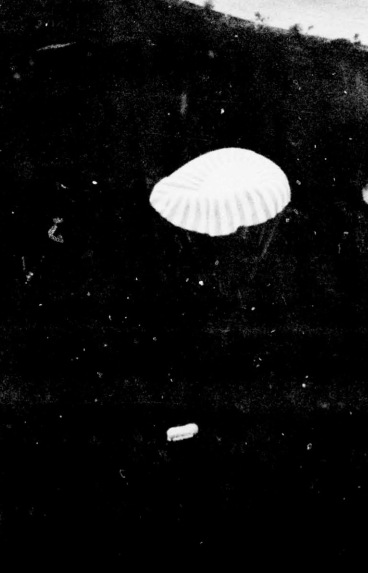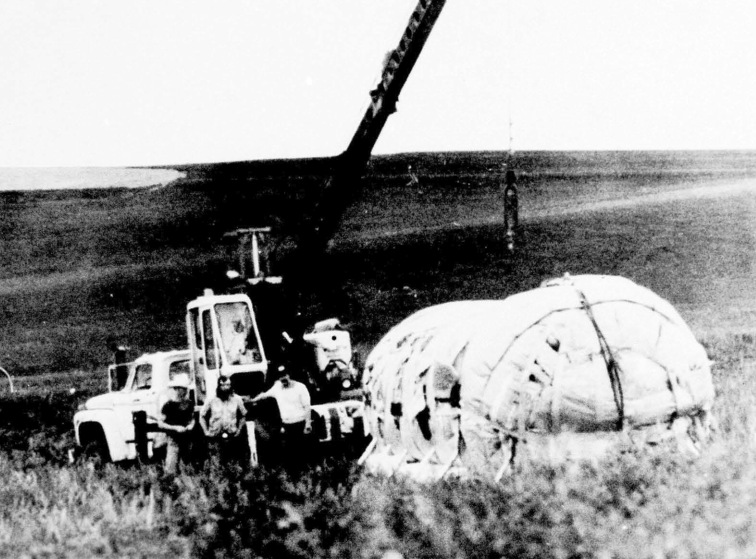Purpose of the flight and payload description
The objective of the flight was to measure the relative abundances of Fe, Co, Ni, Cu, and Zn in the cosmic rays using a large-area balloon-borne electronic detector system. The system was developed by the McDonnell Center for the Space Sciences and Department of Physics at the Washington University in St. Louis.
The detector was composed of two nearly identical systems, side-by-side inside a single aluminum pressure vessel. A cross section of one system is shown in the figure at left and below a picture of the fully assembled system ready to flight. The detector had a large geometrical factor and was very thin to allow for the collection of a large number of cosmic rays with a small probability of nuclear interaction on it. The charge and velocity of each incident nucleus were determined by the dE/dx-C method wherein dE/dx, the rate of energy loss of the nucleus, was measured by the ionization in the ion chamber gas; and C was the intensity of Cerenkov radiation produced by the nucleus in passing through a Lucite radiator.
The measurement of the rate of energy loss, dE/dX, was made by dual gap, pulse ionization chambers. Four independent ionization measurements were made, two above, and two below the Cherenkov counter. The ionization signal, I, was derived by taking the mean of these four measurements. The light output from the 0.64 cm thick Pilot 425 radiator in the Cherenkov counter was measured by two independent sets of photomultiplier tubes. The Cherenkov signal, C, was derived by taking the mean of the signals from these two sets of tubes. The ionization hodoscopes provided the trajectory information necessary to calculate the path-length in each detector and to correct for areal non-uniformities in the ionization and Cherenkov responses.
The cosmic-ray trajectory defined by the hodoscopes also gave the zenith angle of the incoming particles, which was necessary for calculating the actual atmospheric depth traversed by each nucleus. The signals I and C were both proportional to the square of the charge but proportional to different functions of the velocity of the cosmic ray. This allowed to derive a unique charge and energy determination for every element above magnesium (Z=12) in the energy range from 330 to 1200 MeV measured at the middle of the Cherenkov radiator. For iron, the energy interval for essentially unambiguous element identi?cation could be extended to approximately 20 GeV because of the negligible abundance of cobalt (Z=27). To record the events for each of the two detector blocks was used an incremental magnetic tape recorder, which was capable of recording up to five events per second.
The vessel was covered with a special insulation canvas and mounted in a support structure of aluminum tubing that provided a platform for external power supplies, balloon instrumentation, and supplemental landing shock absorbers. The structure was designed to absorb landing forces without affecting the vessel. Ballast was contained in a centrally located canvas hopper under the experiment.
Details of the balloon flight
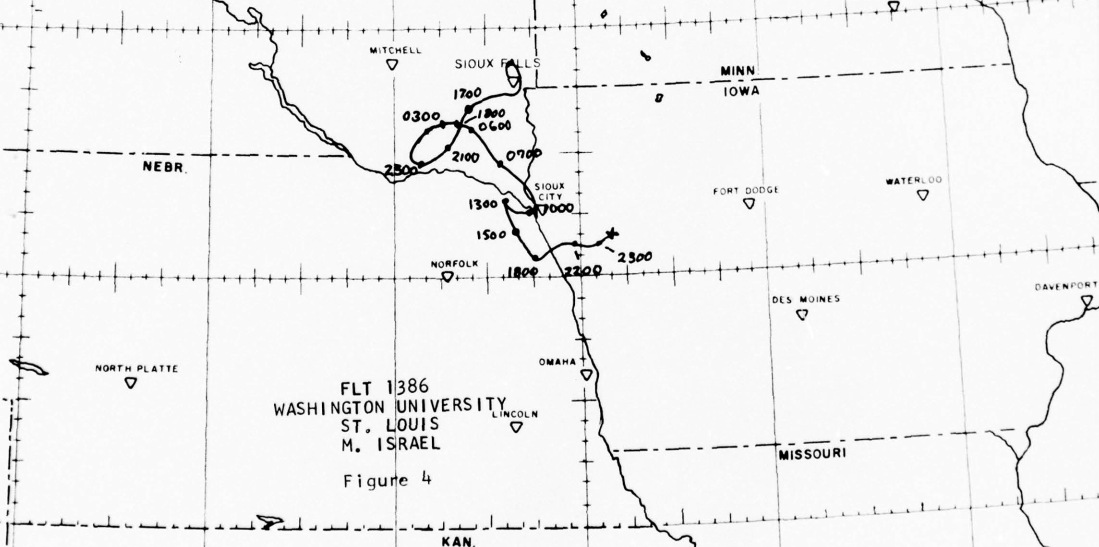
Balloon launched on: 5/25/1976 at 11:29 utc
Launch site: Joe Foss field, Sioux Falls, South Dakota, US
Balloon launched by: Raven Industries Inc.
Balloon manufacturer/size/composition: Zero Pressure Balloon Winzen 39.600.000 cuft (Natural Shape 0.8 miI shell 3 caps 0.9 mil Stratofilm)
Balloon serial number: SF464.82-080-NSC-01 S/N 1
Flight identification number: Raven Flt Nº 1386
End of flight (L for landing time, W for last contact, otherwise termination time): 5/26/1976 at 23:35 utc
Balloon flight duration (F: time at float only, otherwise total flight time in d:days / h:hours or m:minutes - ): 36 h
Landing site: Near Battle Creek, Iowa, US
Payload weight: 6567 lbs
Overall weight: 11.570 lbs
The balloon was launched from Joe Foss Field airport in Sioux Falls at 11:29 utc on May 25, 1976. Due to some cross surface wind, the launch required some manouver by the crane acting as launch vehicle. After a nominal ascent the balloon reached float altitude about 15:00 utc, and recorded useful data until termination 31.5 hours later. Mean float altitude was 4.5 mb (maximum 3.6 mb). Landing of the payload occured near Battle Creek, Iowa at 23:35 utc on May 26. The gondola suffered only minor damage in the outer part, but the instrument was intact.
During this flight the pressure vessel that contained the detectors leaked slowly, so the gas pressure fell continuously throughout the flight from the nominal one atmosphere at the beginning to approximately a half atmosphere at termination. The consequent decrease in gas density in the ionization chambers resulted in both a decrease in the signal levels and a degradation of the charge resolution in the detector.
External references
- Cosmic-ray abundances of individual elements in the Z interval between 26 and 30 Astrophysical Journal, Part 1, vol. 228, Mar. 1, 1979, p. 582-591
10845If you consider this website interesting or useful, you can help me to keep it up and running with a small donation to cover the operational costs. Just the equivalent of the price of a cup of coffee helps a lot.

